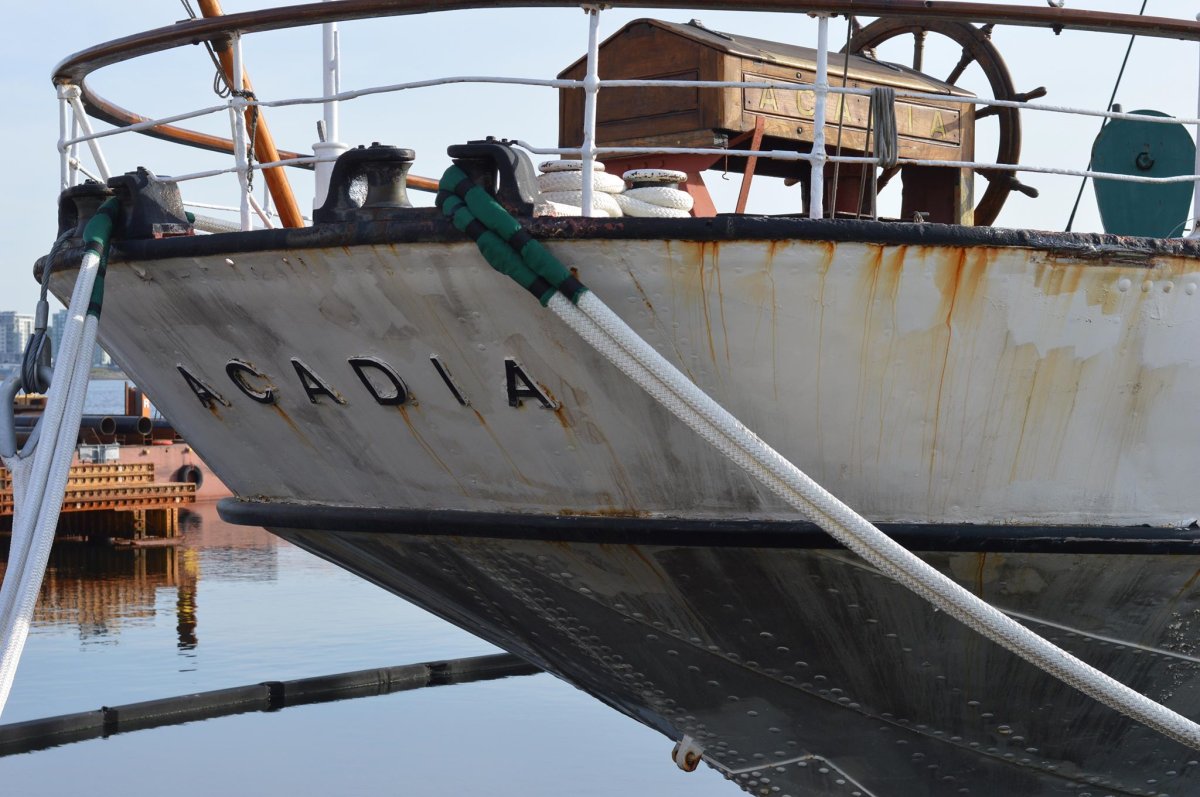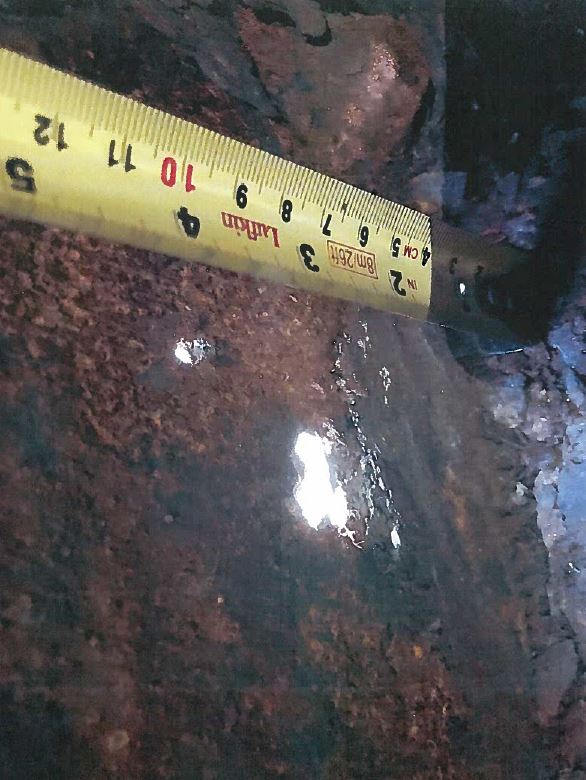At 105 years of age, the steel-hulled CSS Acadia is one of the central attractions at the Maritime Museum of the Atlantic in Halifax and has the distinction of being the only surviving vessel to have served the Royal Canadian Navy in both world wars.

Even though the vessel survived the Halifax Explosion it is currently facing its greatest challenge — the destructive force of salt water and time.
The Canadian Scientific Ship Acadia or CSS Acadia has been left to rust away in the Halifax Harbour as much-needed repair and maintenance work has been delayed over a lack of funding, putting the long-term future of the vessel in jeopardy.
The state of Halifax’s Grand Old Lady, a registered National Historic Site, is detailed in 226 pages of emails, briefing notes, memos and reports about the CSS Acadia released under a freedom of information request.
READ MORE: Historic Halifax ship’s beloved longtime ‘rodent control officer’ dies
According to Shannon Delbridge, the executive director of public works and strategic initiatives at the Department of Transportation and Infrastructure Renewal, the deterioration has become so bad that she chose to inform staff across two departments of the state of the ship.
“I wanted to make sure you were aware that there is increased urgency if (Community Cultures and Heritage) wishes to maintain the vessel,” Delbridge wrote in an email dated May 9, 2018.
Leo Glavine, Minister of Communities, Culture and Heritage, told Global News in an interview on Thursday that there is still no “definitive” timeline for when CSS Acadia will go into drydock.
“To make sure that it has a sustainable future is to actually do a very strong assessment prior to going to drydock and that’s ongoing,” Glavine said.
But internal documents say that won’t make a difference.
“Another study is not required and would not yield additional information,” a briefing note from May 2018 reads.
“This is the best information available before she is placed in the dockyard where her hull can be fully examined.”
The vessel has not been dry-docked since 2010, a task that used to be regularly carried out every six or seven years, according to the documents from 2009 detailing the repairs.
Repairs carried out that year included providing the underwater hull with a new coating, general welding repair, securing nuts and bolts in the porthole, and a complete cleaning and re-coating of the entire hull above the water.
Glavine says that the government knows a major overhaul is necessary on the 105-year-old vessel but says the government doesn’t know how much that may cost.
“We’ll certainly look for some federal partnership,” he said.
WATCH: Historians feel mysterious Dartmouth chair ‘likely’ to be linked to Halifax Explosion

Nova Scotia has redacted any estimates on the funding required to complete the basic upgrades needed for the CSS Acadia. However, estimates on long-term upgrades documented in 2013 such as asbestos abatement and determining integrity of the propeller and shaft are estimated to cost approximately $1.4 million.
“Failure to address current chronic problems (leaking decking causing corrosion below deck, corroded steel decking and fixtures, etc.) will lead to continued deterioration which may lead to restricted access and ultimately, vessel failure,” a briefing note reads.
The costs could increase depending on what was discovered when the vessel would go into dry dock. The hull, in particular, is proving to be a bigger problem than first reported.
An amendment to the same briefing note indicates that during a tour on April 18, 2018, the ship’s caretaker pointed out a visible hole in the hull approximately seven feet below the deck and about five feet above the water line.
READ MORE: Federal government announces $3.5M to help preserve HMCS Sackville
According to the note, the ship’s caretaker, Steve Read, pointed out the hole and stated that he thought he could see daylight when he looked at the spot. Upon bumping the area with the toe of his boot, the steel gave away to expose the existing hole.
“Concerns were raised that this was encountered by ‘accident,’ so what else has deteriorated to this point. I thought that I’d make you aware of the incident, given the potential seriousness of the situation,” the amendment reads.
Glavine admits that the vessel needs work.
“The need to get it into drydock is one that I’ve expressed before as minister and I want to see that realized in a reasonable amount of time,” said Glavine.
“That’s what we’re working towards.”






Comments